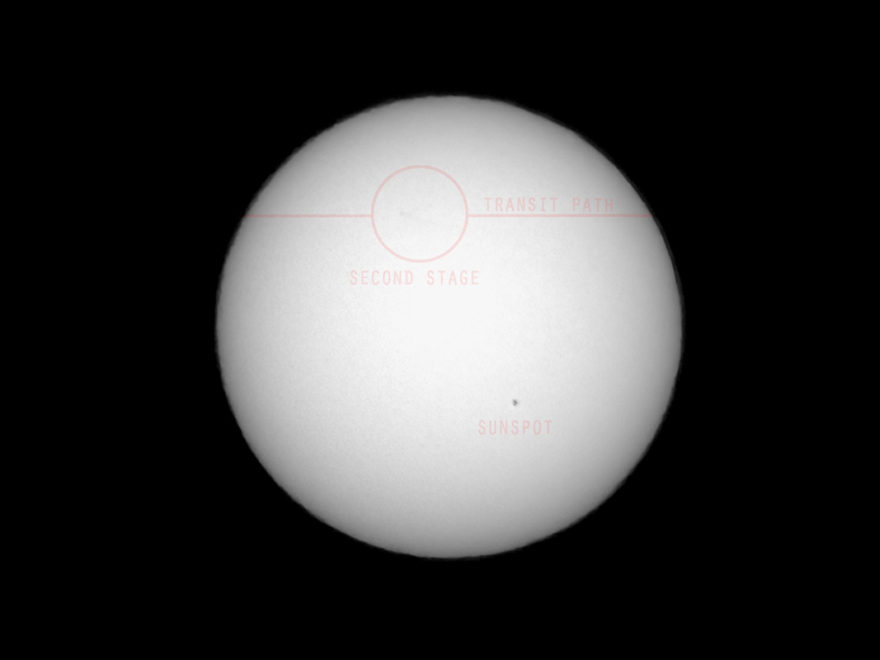In my post yesterday I mentioned there may be a solar transit by a Falcon 9 booster during a Starlink launch tomorrow morning at 7:40 am. I reached this conclusion by using the Stellarium app to find the position of the Sun and the Flightclub.io alt-az generator to find the position of the booster. The Sun’s position is pretty accurate, the booster less so because of all the variables (engine performance, winds, trajectory, etc.) so there is some uncertainty. Here are the closest conjunctions tomorrow morning when viewed from the FDR State Park office:

To see the Sun and booster within 0.77° of each other is promising. Even the 1.28° difference for the second stage is promising given all the variables. But what boosts my confidence even more is a Falcon 9 second stage solar transit I captured on 8 October 2020:
Note the distinctive < shaped plume of a second stage. This was photographed from a very windy FDR State Park office.
The conjunctions for that launch looked like this:

Even with a difference of 0.61° between the second stage and Sun I still managed to capture the transit.
Two big questions now remain – will the weather allow a launch from Cape Canaveral and will the clouds clear locally? The latest forecast from the 45th Weather Squadron at Patrick Space Force Base predicts a 40% probability of violating weather constraints while NWS Peachtree City is predicting 25% cloud cover locally. Should there be a 24-hour delay there will not be a transit opportunity.
Lastly here is a quote from my Rocket Launch Viewing Guide regarding solar transits:
This is not something that can be seen with the naked eye so you will need some form of optical aid like binoculars, a telephoto lens, or a telescope. WARNING – even though the sun may be low on the horizon it can still cause serious eye injury or blindness if you look at it with the naked eye. Do not look at the sun without solar glasses (aka eclipse glasses) and do not attempt to watch a solar transit without having a solar filter attached to the front of your optical aid.

